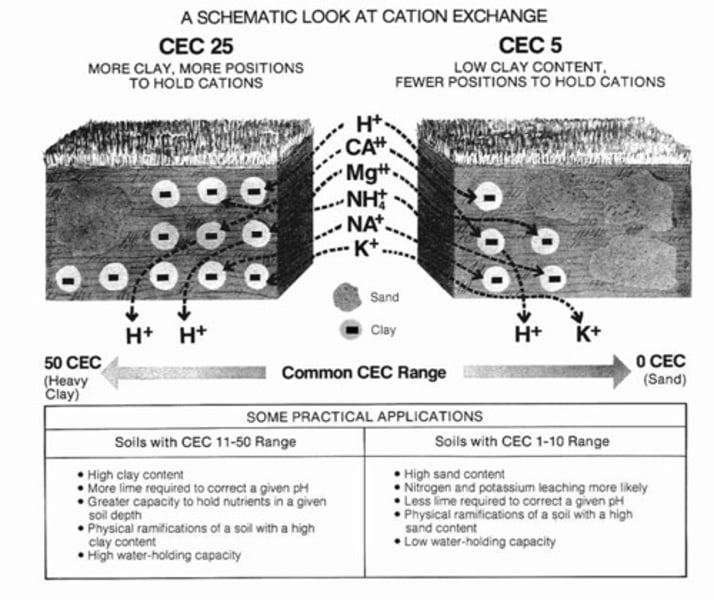Unit 4: Earth Resources and Systems
1/60
There's no tags or description
Looks like no tags are added yet.
Name | Mastery | Learn | Test | Matching | Spaced |
|---|
No study sessions yet.
61 Terms
Watershed
An ecosystem where all water runoff drains into a single body of water
Troposphere
The lowest layer of Earth's atmosphere
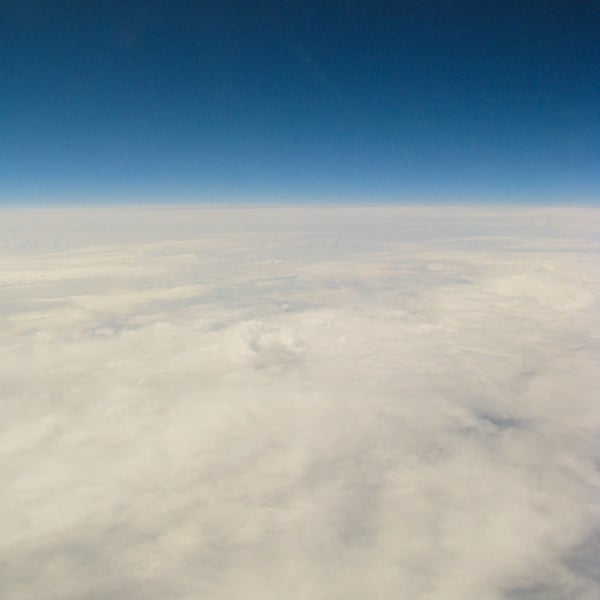
Stratosphere
The second-lowest layer of Earth's atmosphere.
Albedo
Ability of a surface to reflect light

adiabatic cooling
the cooling effect of reduced pressure on air as it rises higher in the atmosphere and expands
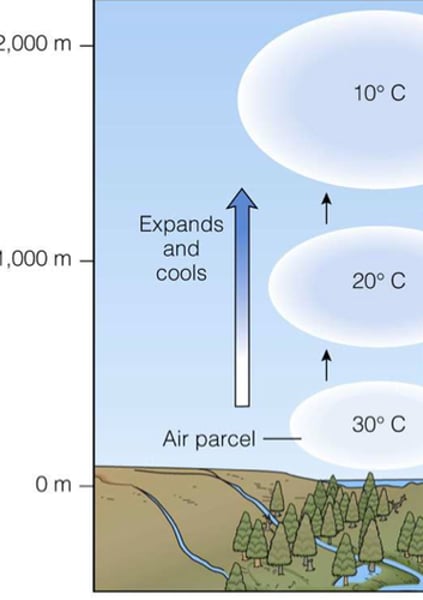
adiabatic heating
the heating effect of increased pressure on air as it sinks toward the surface of Earth and decreases in volume
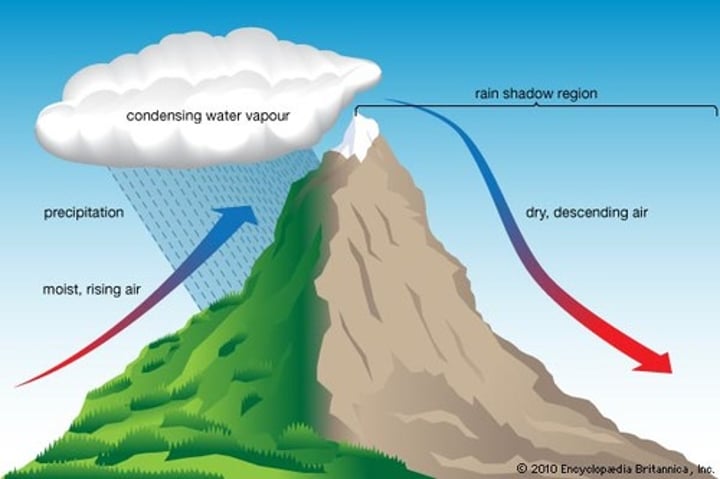
latent heat release
the release of energy when water vapor in the atmosphere condenses into liquid water
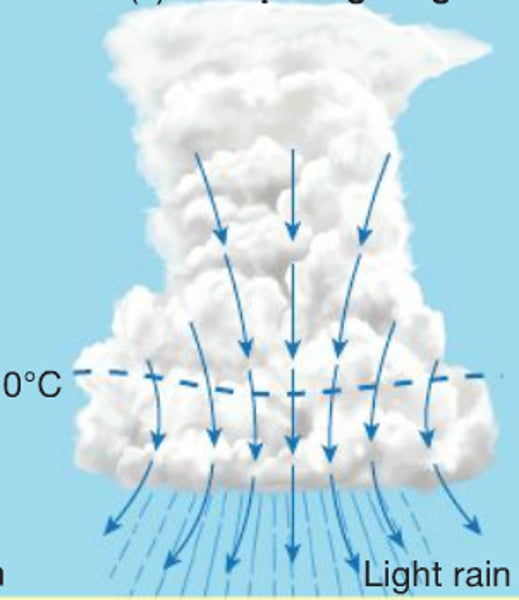
Atmospheric convection current
global patterns of air movement that are initiated by the unequal heating of Earth
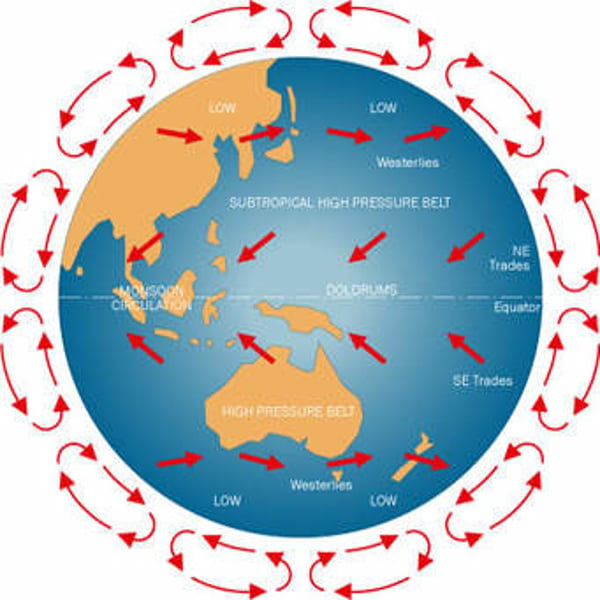
Hadley Cell
a system of vertical and horizontal air circulation predominating in tropical and subtropical regions and creating major weather patterns.
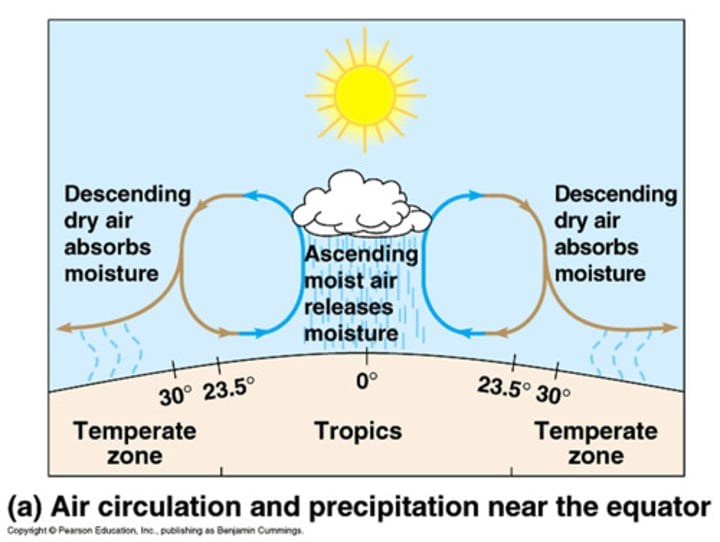
Intertropical Convergence Zone (ITCZ)
The latitude that receives the most intense sunlight, which causes the ascending branches of the two Hadley cells to converge
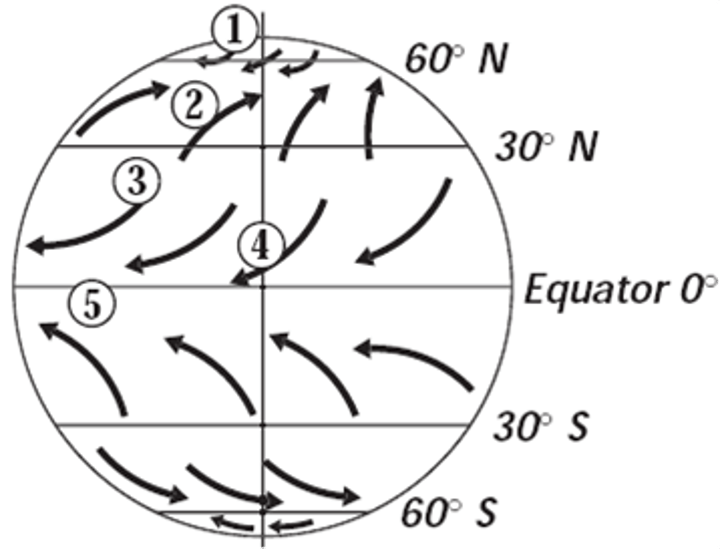
Polar Cell
Cells of air circulation occurring between 60 degrees north and south and each pole.
Ferrel Cell
A convection current in the atmosphere that lies between Hadley cells and polar cells
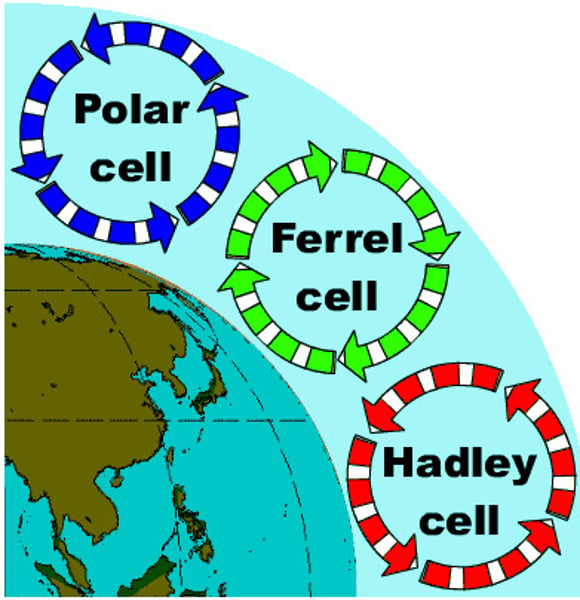
Coriolis effect
The effect of Earth's rotation on the direction of winds and currents.
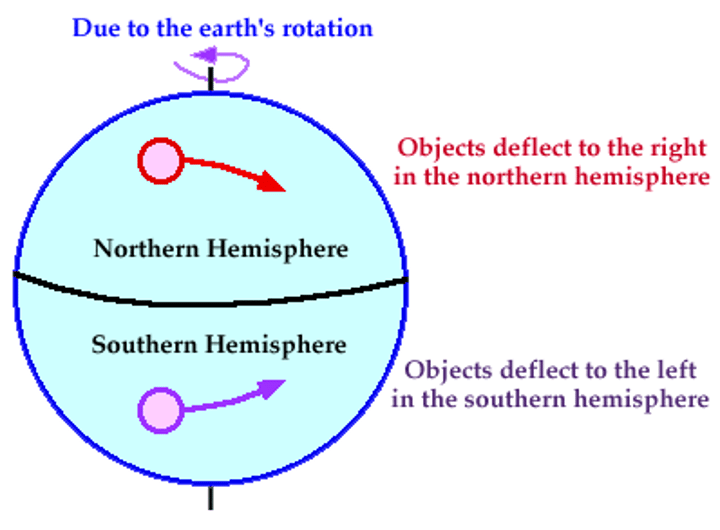
rain shadow
a region with dry conditions found on the leeward side of a mountain range as a result of humid winds from the ocean causing precipitation on the windward side
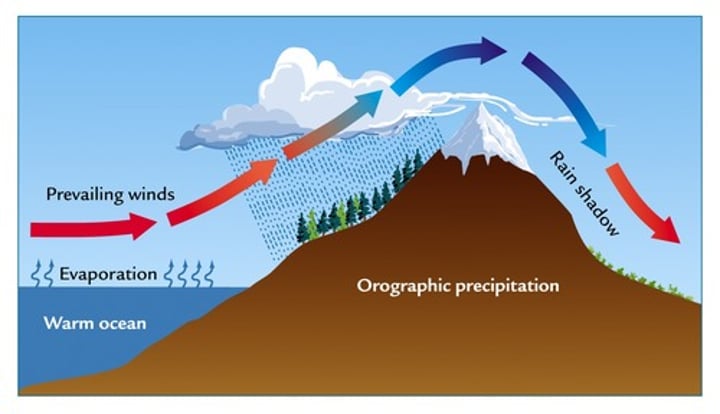
Gyre
a circular motion of water in each of the major ocean basins
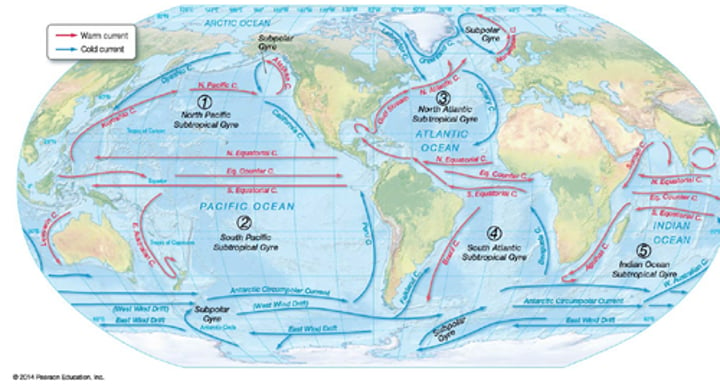
Upwelling
The movement of deep, cold, and nutrient-rich water to the surface
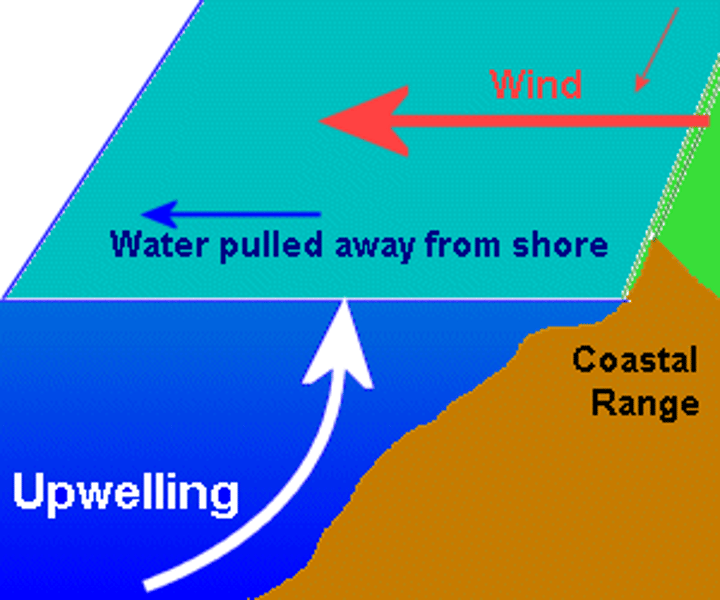
thermohaline circulation
an oceanic circulation pattern that drives the mixing of surface water and deep water
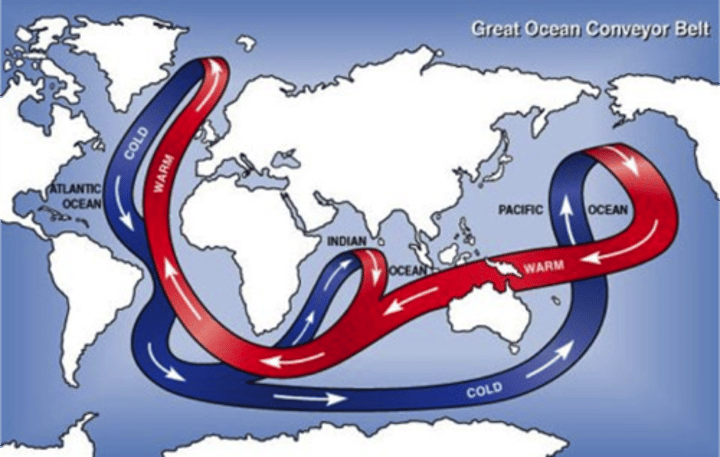
El Nino-Southern Oscillation (ENSO)
The periodic changes in winds and ocean currents, causing cooler and wetter conditions in the southeastern United States and unusually dry weather in southern Africa and Southeast Asia.
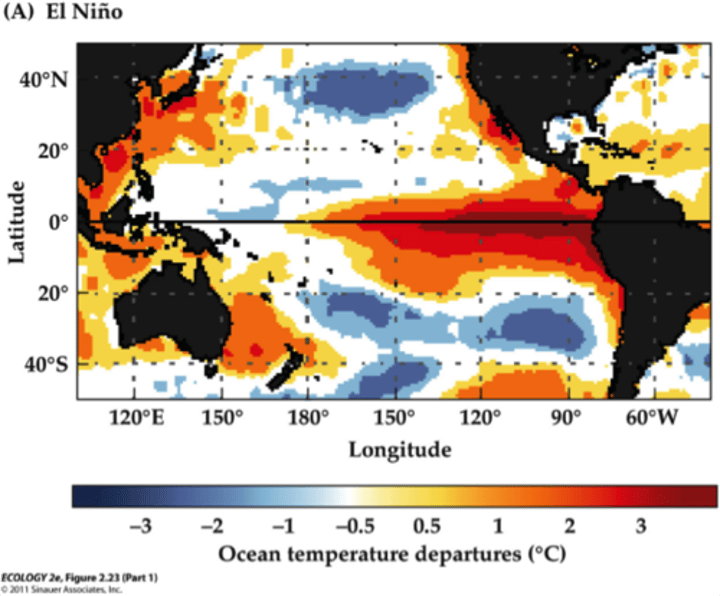
core
The central part of the earth below the mantle

Mantle
The layer of hot, solid material between Earth's crust and core.
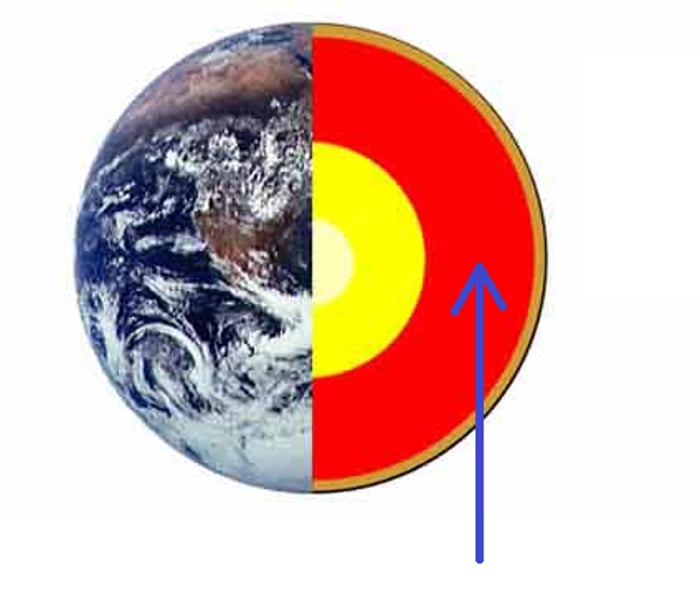
Magma
A molten mixture of rock-forming substances, gases, and water from the mantle
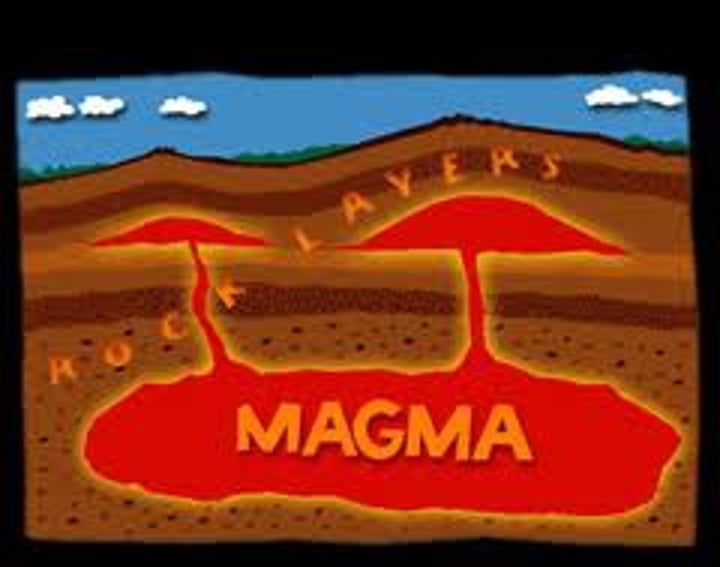
Asthenosphere
The soft layer of the mantle on which the lithosphere floats.
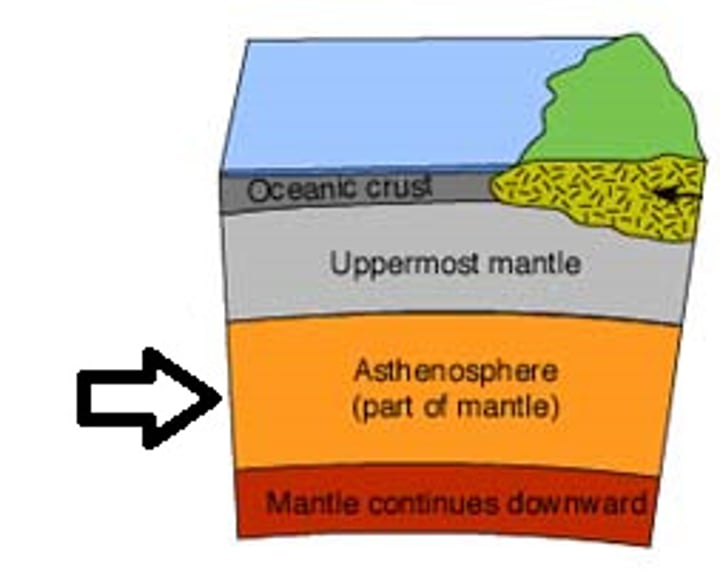
Lithosphere
A rigid layer made up of the uppermost part of the mantle and the crust.

Crust
The thin and solid outermost layer of the Earth above the mantle
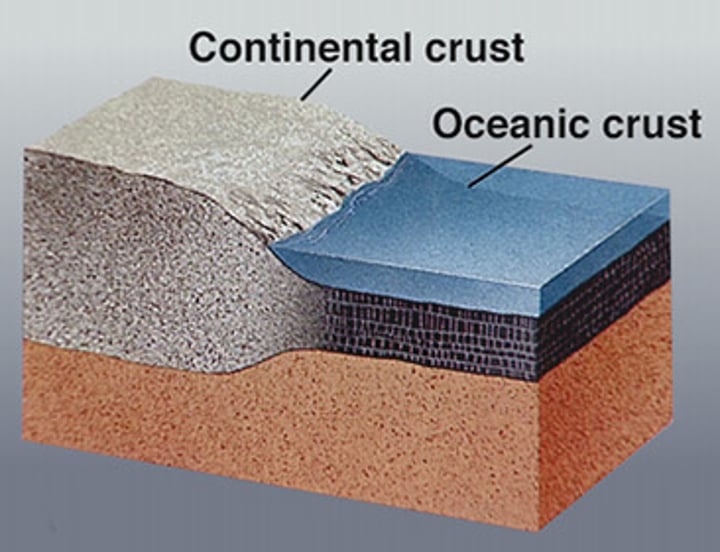
hot spot
An area where magma from deep within the mantle melts through the crust above it
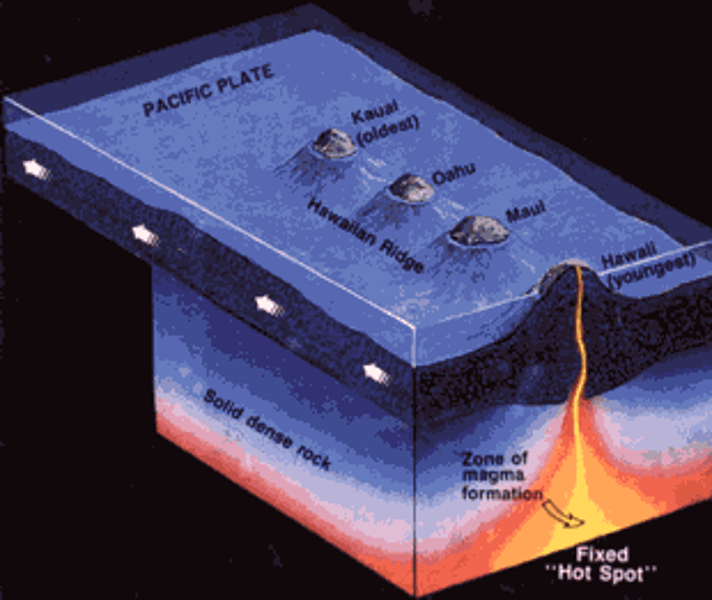
plate tectonics
The theory that pieces of Earth's lithosphere are in constant motion, driven by convection currents in the mantle.
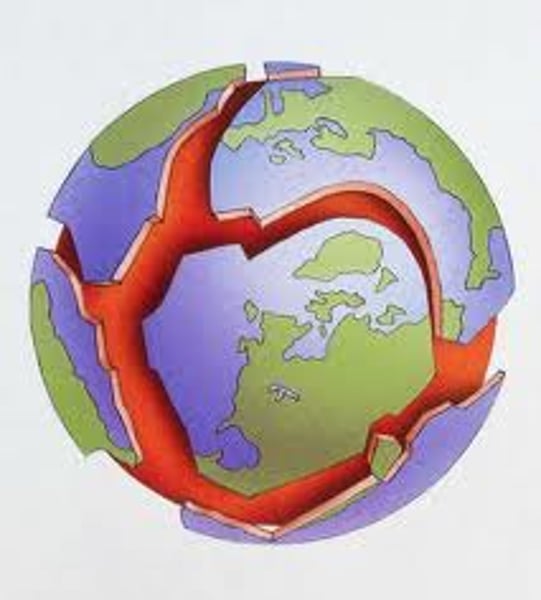
tectonic cycle
the sum of the processes that build up and break down the lithosphere
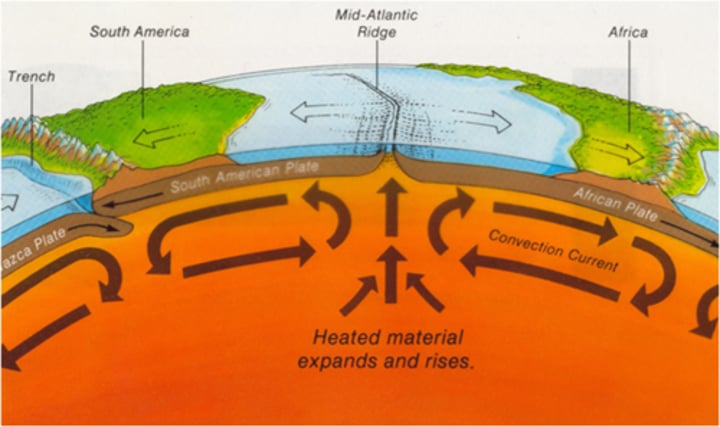
Subduction
The process by which oceanic crust sinks beneath a deep-ocean trench and back into the mantle at a convergent plate boundary.
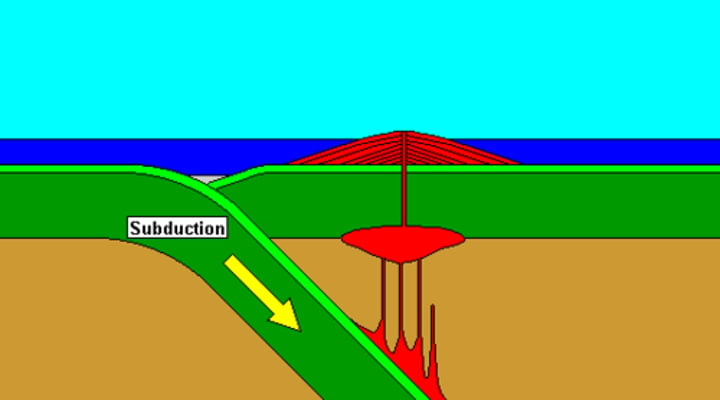
volcano
A vent or fissure in the Earth's surface through which magma and gases are expelled
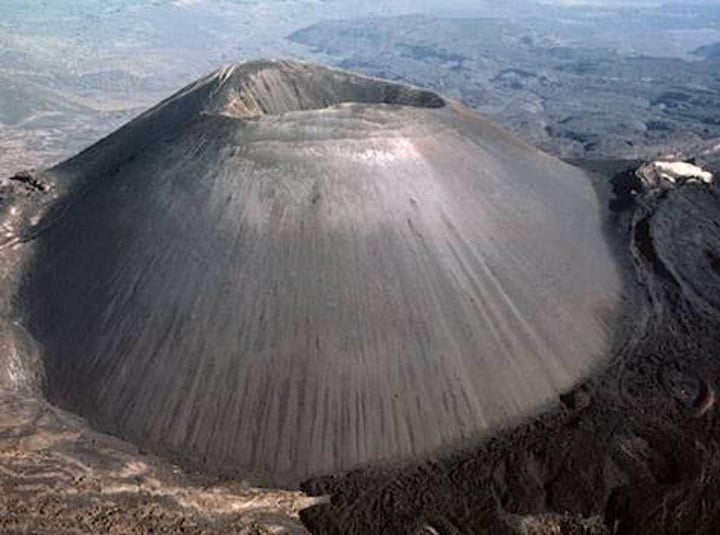
divergent plate boundary
an area beneath the ocean where tectonic plates move away from each other
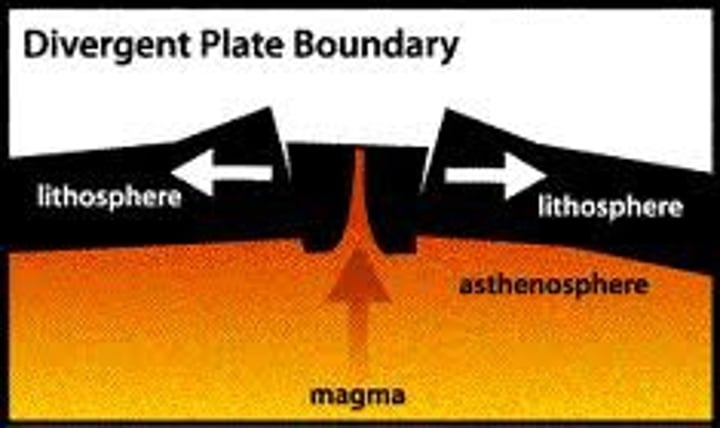
seafloor spreading
The process that creates new sea floor as plates move away from each other at the mid-ocean ridges
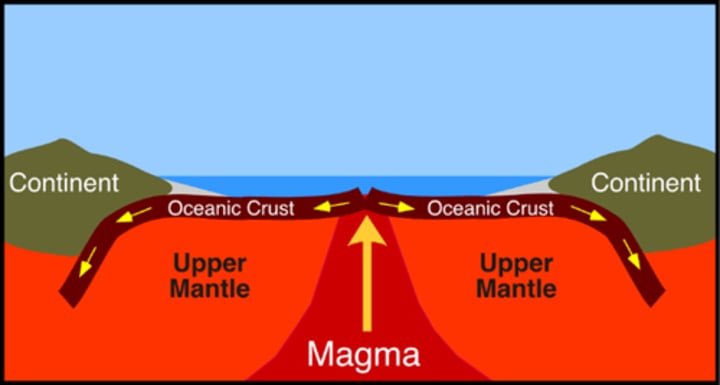
convergent plate boundary
A tectonic plate boundary where two plates collide, come together, or crash into each other.
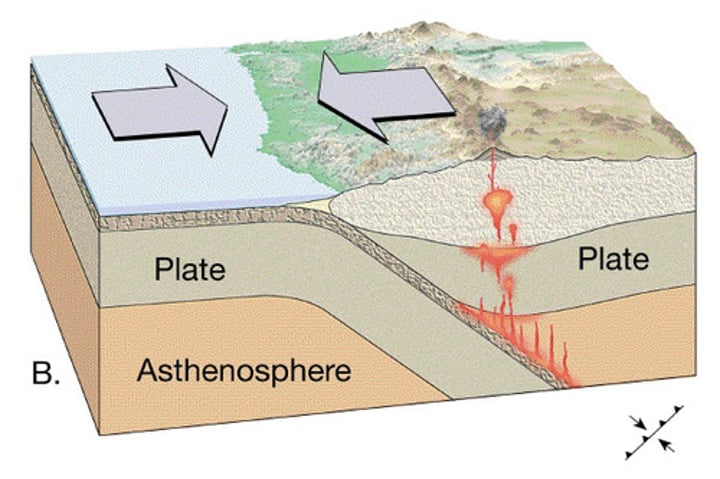
transform plate boundary
Boundary between two plates that are sliding past each other.
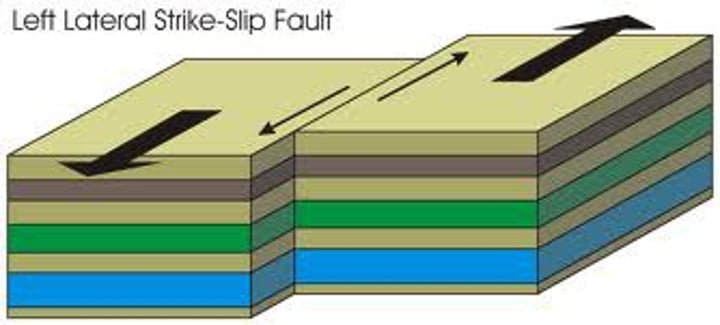
fault
A break in the earth's crust
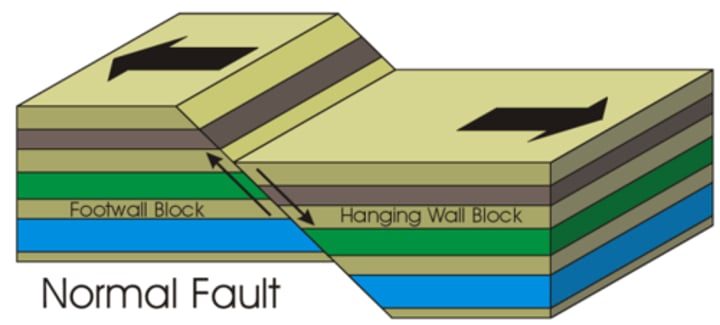
seismic activity
the frequency and intensity of earthquakes experienced over time
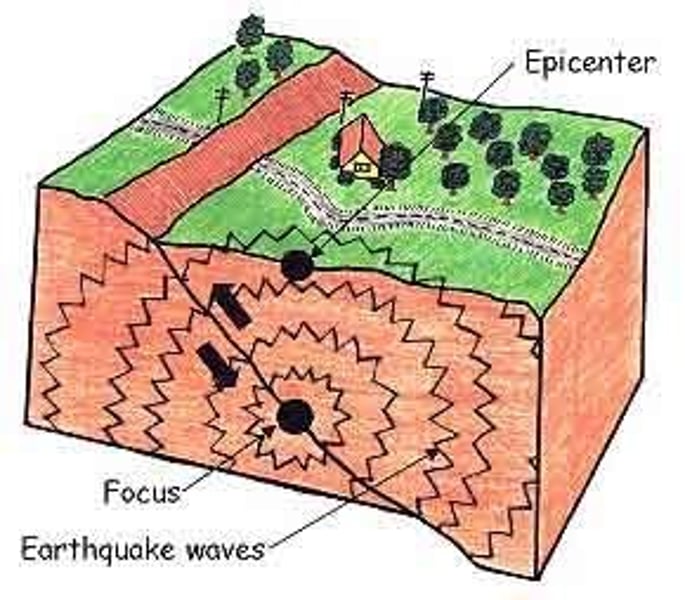
fault zone
a large expanse of rock where a fault has occurred

earthquake
The shaking that results from the movement of rock beneath Earth's surface.
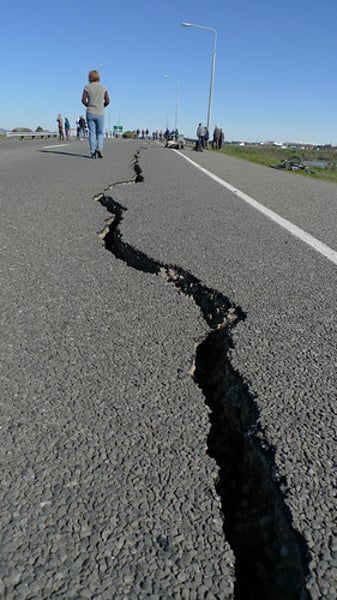
Epicenter
the point on the Earth's surface directly above the focus of an earthquake
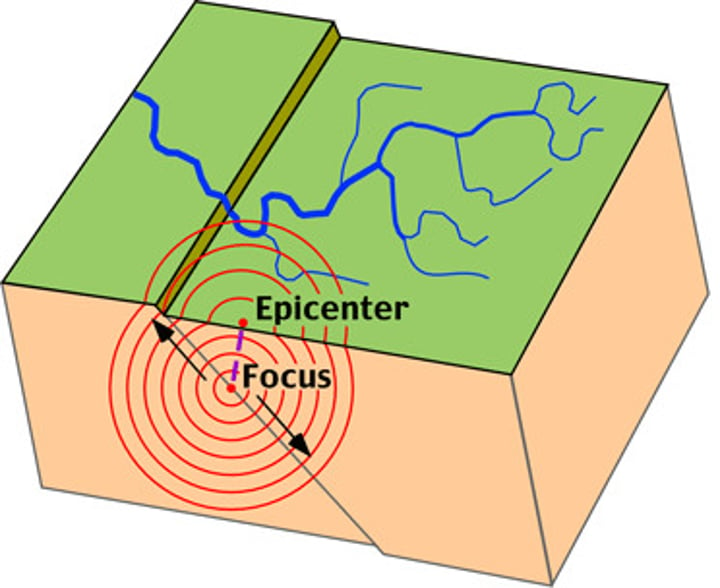
Richer scale
a scale that rates an earthquakes magnitude based on the size of its seismic wave
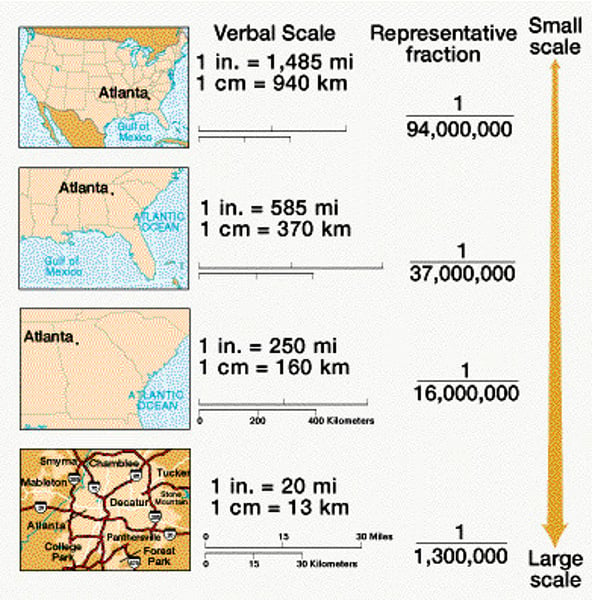
Tsunami
A giant wave usually caused by an earthquake beneath the ocean floor.
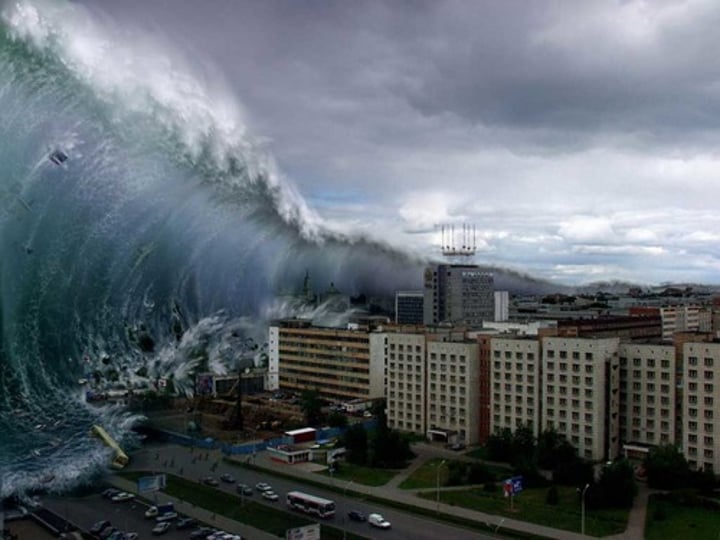
rock cycle
A series of processes on the surface and inside Earth that slowly changes rocks from one kind to another
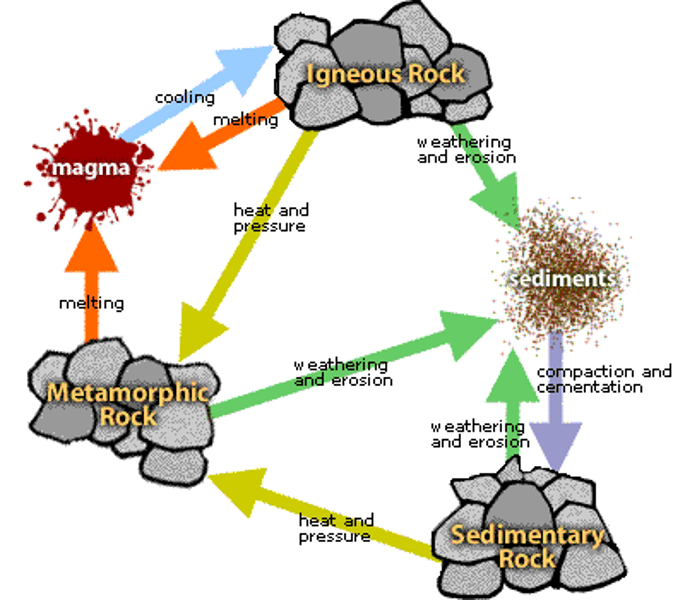
igneous rock
a type of rock that forms from the cooling of molten rock at or below the surface
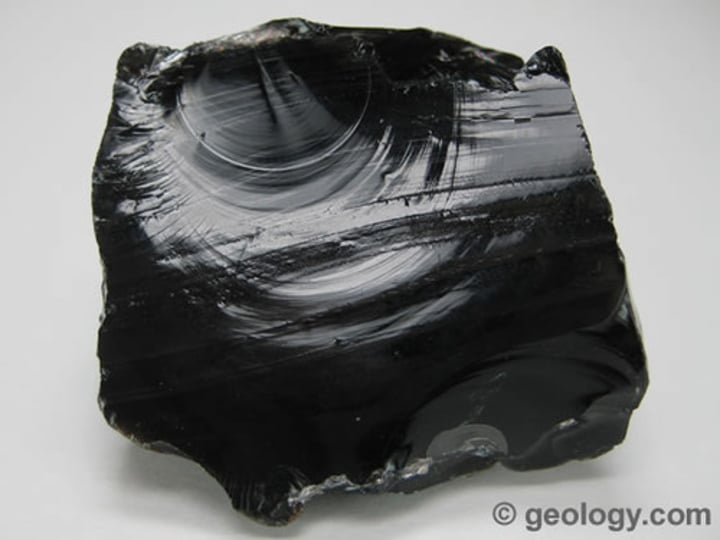
intrusive igneous rock
igneous rock that forms when magma rises up and cools in a place underground
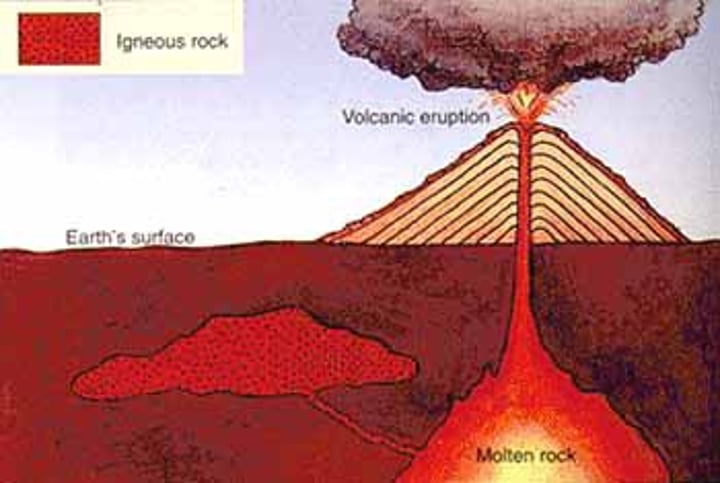
extrusive igneous rock
rock that forms as a result of volcanic activity at or near the Earth's surface
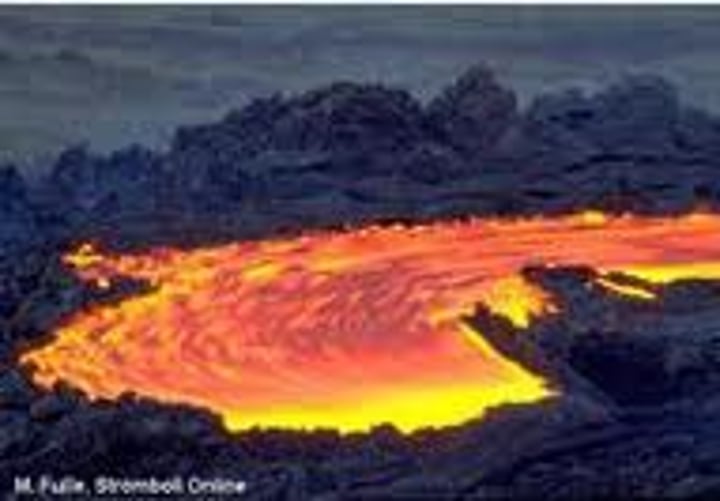
sedimentary rock
A type of rock that forms when particles from other rocks or the remains of plants and animals are pressed and cemented together
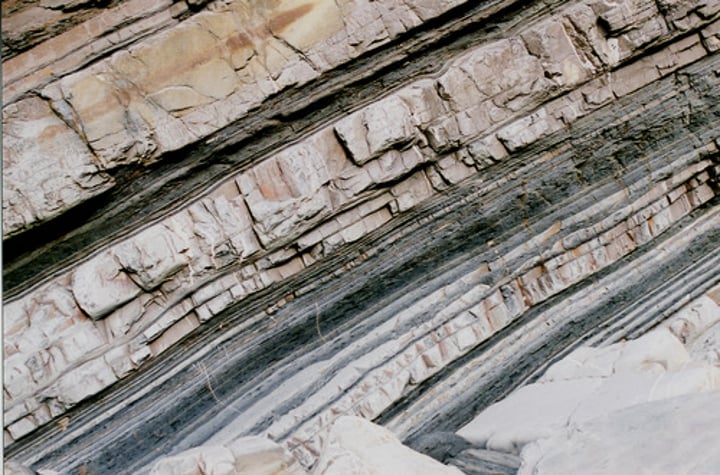
metamorphic rock
A type of rock that forms from an existing rock that is changed by heat, pressure, or chemical reactions.
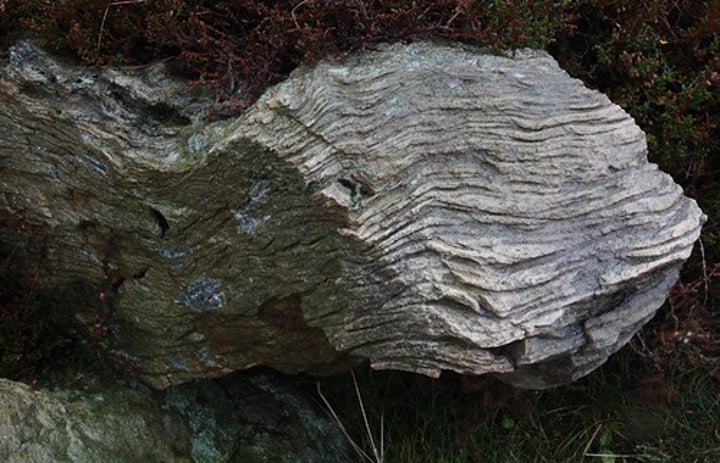
physical weathering
the mechanical breakdown of rocks and minerals
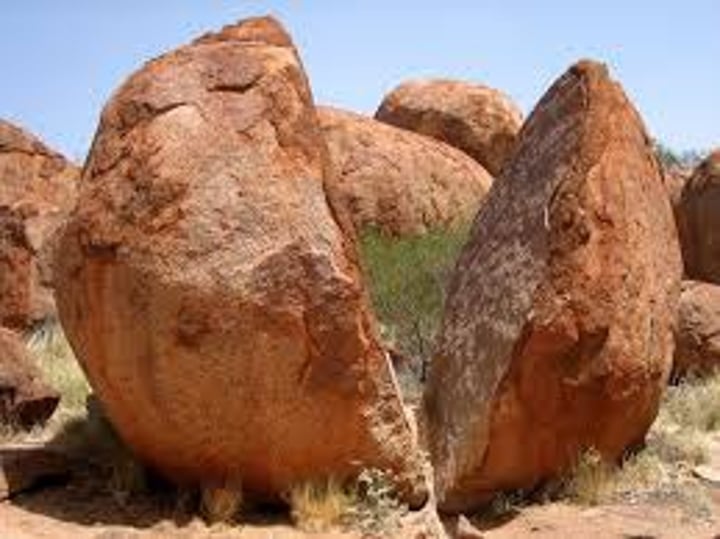
chemical weathering
The process that breaks down rock through chemical changes

acid precipitation
Conversion of sulfur oxides and nitrogen oxides to acids that return to Earth as rain, snow, or fog
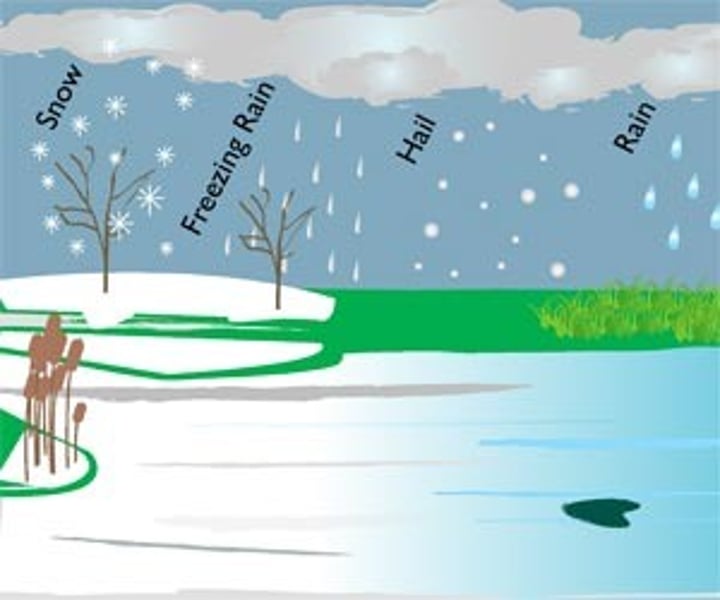
Erosion
Processes by which rock, sand, and soil are broken down and carried away (i.e. weathering, glaciation)
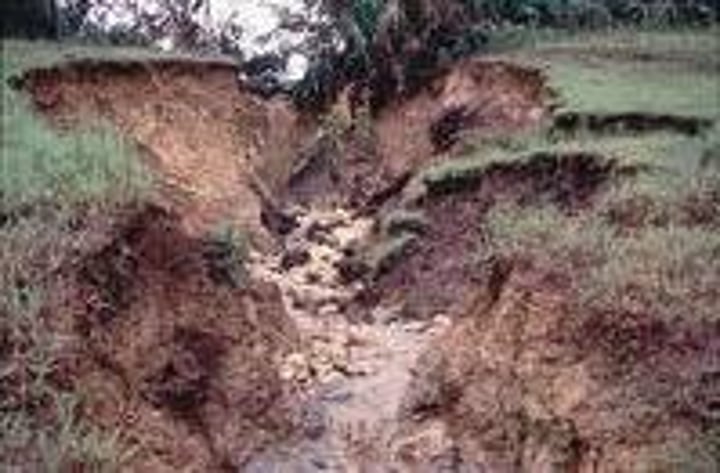
parent material
the rock material from which the inorganic components of a soil are derived

soil degradation
The loss of some or all of a soil's ability to support plant growth
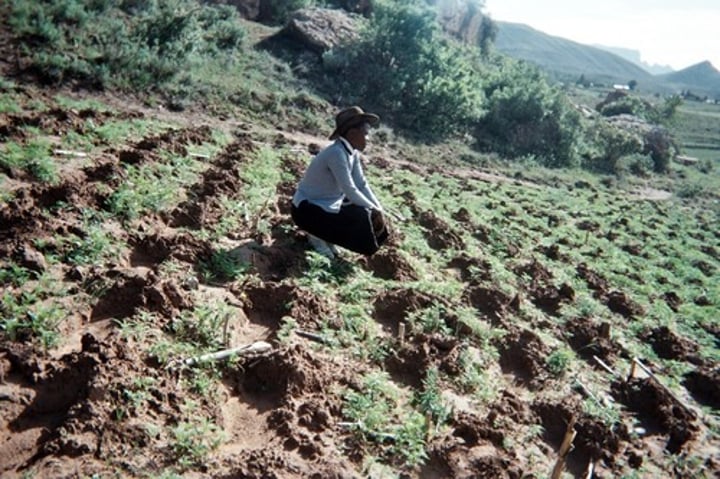
horizon
A layer of soil, approximately parallel to the surface, having distinct characteristics produced by soil-forming processes.
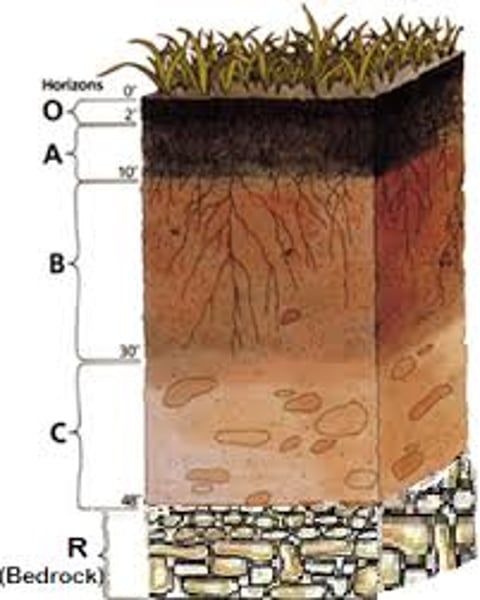
0 horizon
the top layer of the surface containing inorganic solids, decaying organic matter, and living organisms

Humus
material formed from decaying leaves and other organic matter
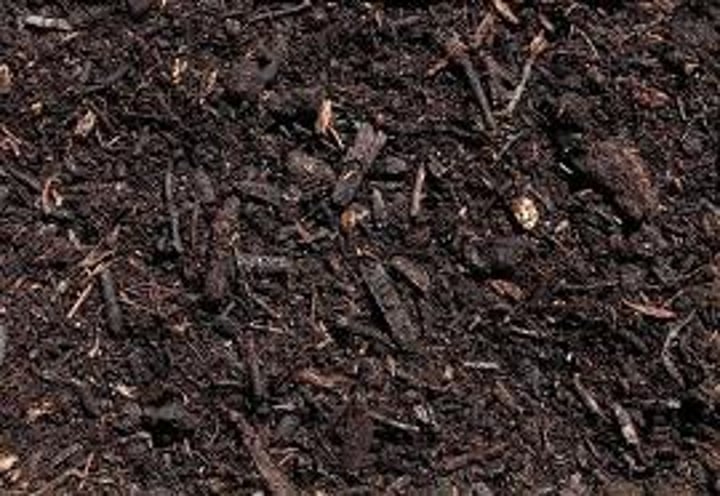
A horizon
topsoil
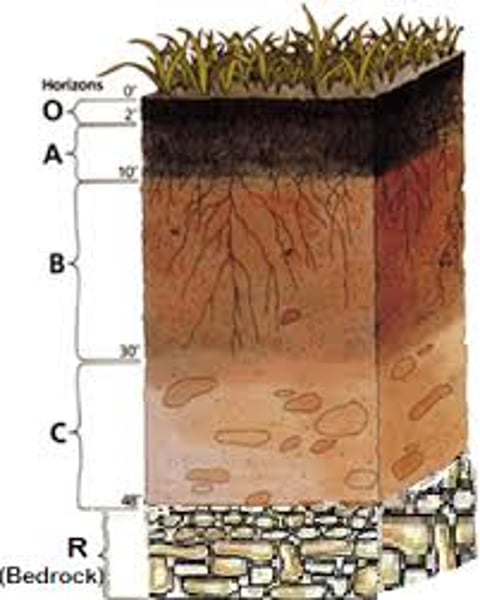
E horizon
The zone of leaching that forms under the O horizon or, less often, the A horizon.

B horizon
subsoil
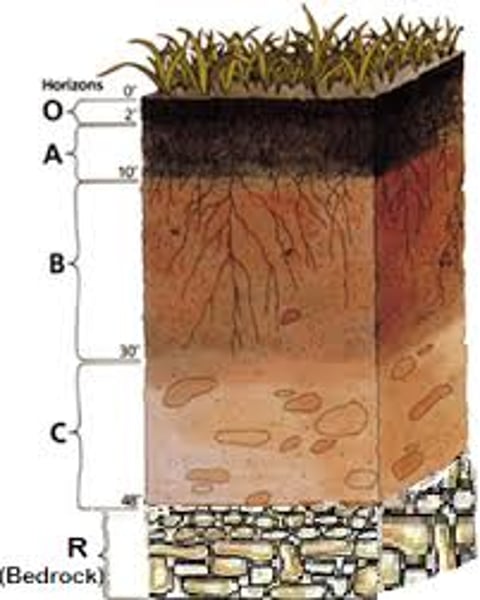
C horizon
The least-weathered soil horizon, which always occurs beneath the B horizon and is similar to the parent material.
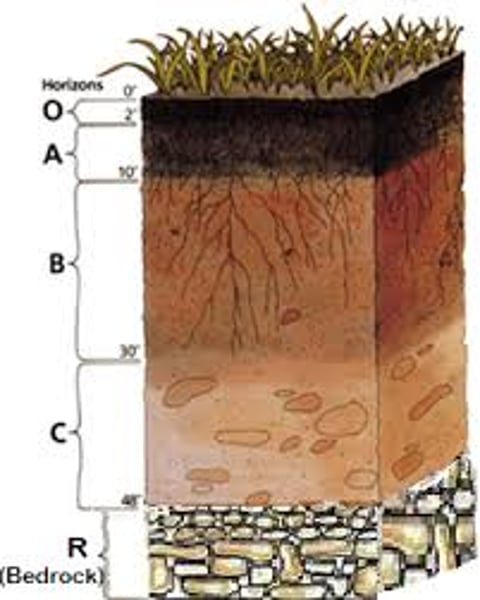
cation exchange capacity
the ability of a particular soil to absorb and release cations
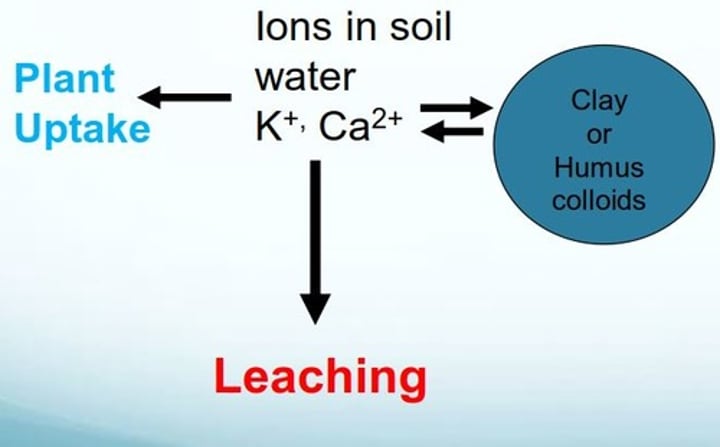
base saturation
the proportion of soil bases to soil acids, expressed as a percentage
